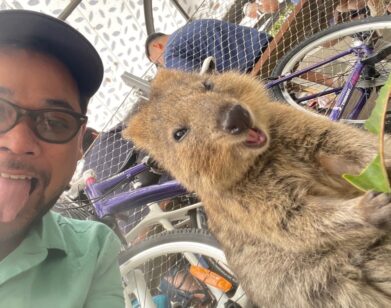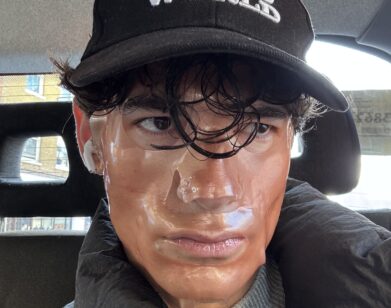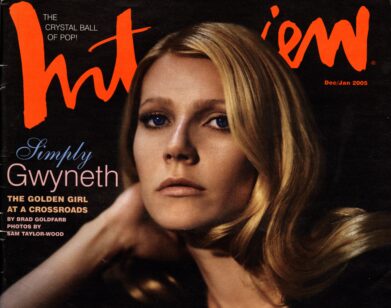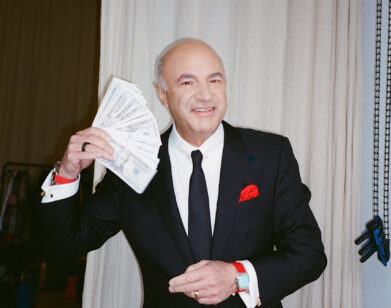The Giving Tree
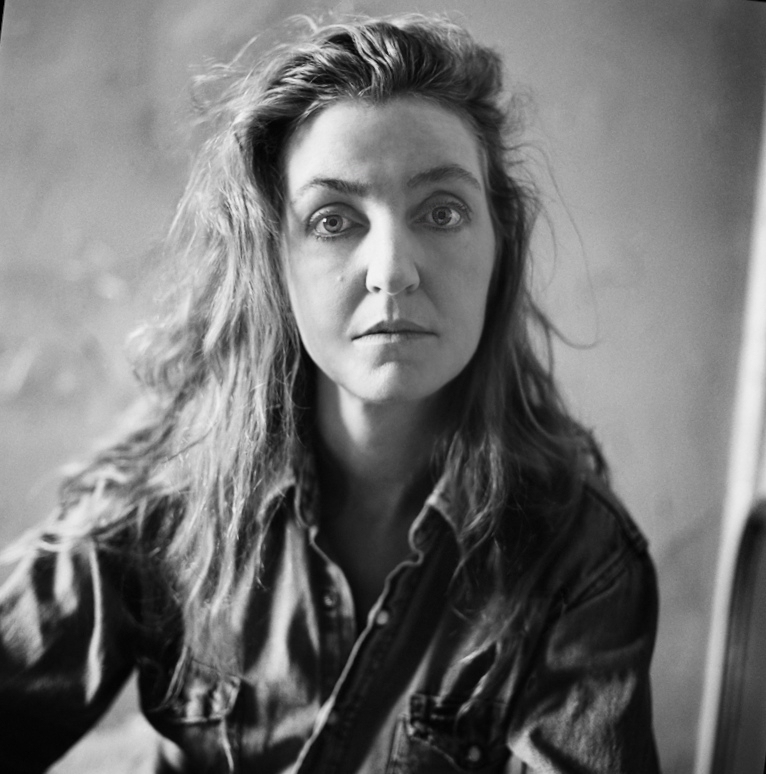
ABOVE: REBECCA SOLNIT. PHOTO COURTESY OF JIM HERRINGTON
Rebecca Solnit’s The Faraway Nearby is a memoir, but not in the traditional sense. It is not, for example, a story of surviving a famine or a war, or even of family drama or recovery from an illness. Instead, it is a rich meditation on the way that the stories we tell ourselves about ourselves and about others both bind and distance us from our families and the world at large. The book opens with Solnit receiving 100 pounds of apricots when her mother is taken into a home and ends with her giving away those apricots, bit by bit. Within that structure—there are 13 chapters, each with an opposite chapter with the same title, and a 14 that runs along the bottom of the book like an extended footnote—Solnit weaves through leprosy, Frankenstein, and her own trip to Iceland in an exploration of gifts, debts, and narratives. We spoke with Solnit on the phone while she was in Dublin, promoting her book.
MICHAEL HAFFORD: Have you ever read The Gift by Lewis Hyde?
REBECCA SOLNIT: I read it many years ago. It’s been a huge influence on me.
HAFFORD: I just read it a few months ago, and I kept noticing examples of the gift economy popping up in your work, primarily with the trip to Iceland but also in “Apricots,” how you talk about giving them to the hospital staff. Does that book still influence you?
SOLNIT: It does. You know, it gave me some really foundational ideas. One of them was about scarcity economics of capitalism and how it applies to personal life—if I think you’re my competitor and there’s not enough to go around, then I think the more you have the less I have, and I begrudge you of your well-being, your good looks, your wonderful adventure. Whereas there’s a lot of gift economy where there’s a lot to go around. The more you have, the more I have, because there’s reciprocity and shared interests. It can give you a really different feel about how each of us relates to other people’s good fortune, good looks, well-being, etc. So The Gift was influential for me in that way and paying attention to how culture circulates and how much it goes beyond what can be bought and sold. Another book I think is not a sequel to The Gift, but a companion volume, is David Graber’s very recent book Debt, which is about two years old now, which could have the same subtitle to Lewis Hyde’s book: “The erotic life of property,” maybe “The erotic life of money.” Graber’s book is about why we consider debt to be sacred. How this whole idea that people owe each other and that money is this real thing rather than a kind of cultural system that we enter into that kind of corrupts and pollutes our culture, the idea of debt abolition, but the way that those ideas of beholdenness and indebtedness—we even use the word forgiveness to mean this deep emotional reconciliation and letting go of monetary debt. So, Debt is a tour through all the repercussions and meanings of debt and indebtedness in social, political, religious, as well as economic life, and all the ways that it’s poisonous. That book is quoted twice, directly, and had been a recent influence on me. It’s really an ongoing influence. I think it came out right after I began writing The Faraway Nearby, but really became part of it.
HAFFORD: It’s interesting that you talk about stories throughout the book as something that kept you and your mother apart. In the beginning, you say that, “To love someone is to put yourself into their place, we say, which is to put yourself in their story, or to figure out how to tell yourself their story.” Do you think there could be cases in which stories bind us or help us to understand other people?
SOLNIT: Absolutely. This is how we relate to other people. Why do I care about… I’m trying to think of a good example.
HAFFORD: Leprosy, for example.
SOLNIT: Leprosy, for example. To understand what it’s like to have this disease, I have to listen to somebody talk about that experience. I have to imagine what it’s like to be them. It might not be verbal—for me it usually is because I’m a very language-based person—but you literally have to imagine: What is it like to be this person? Where does it hurt? What is it like to be in these circumstances? The guy, Charles Ramsey, who helped the captive girls in Cleveland liberate themselves, used this phrase when he was talking to the 911 operator: “Put yourself in her shoes.” And he was saying, imagine what it’s like to be her, because the 911 operator wanted all kinds of very rational information and, of course, the girl is very overwrought—she’s just escaped from being trapped in a torture dungeon for many years. He seemed to do it very readily, to imagine himself being her, he’s asking that other person to do that imaginative leap. We do that operation all the time. It’s complex because it’s very hard to do for climate change. It’s very easy to do for a story of a child who’s just been injured or stranded. It’s also something we fail to do, because before you can be cruel to somebody, before you can be violent to somebody, before you can cause somebody to suffer, you have to silence your story. You have to come up with some clever way to not put yourself in their shoes, to not feel the pain even as you inflict it on them; if you’re raping someone; if you’re torturing someone; if you evict them from their house, leaving them on the street with their kids. People are very good at numbness. I think empathy is fairly instinctive, although then you have to really act on it for it to be real compassion rather than to be the baby that’s crying because somebody else cries. They teach us, when we decide to start a war in a place like Iraq, how to disassociate ourselves. How to not feel sympathy with people in Iraq. How to not put ourselves in their shoes. And then the media presents carefully censored information, so we didn’t see injured Iraqi children. We didn’t see how exactly their children are like ours and how hideous it is to lose a child, how terrible a child’s pain is. So numbness is an art, and we have all kinds of people who are very good at it. We have banks that are evicting people, military starting wars, media covering it, governments defending their austerity measures, men dehumanizing women, then humiliating and torturing them. The list goes on.
HAFFORD: Yeah. This is maybe a bit of a cognitive leap, and I don’t necessarily want to associate these two things, but you talk about creativeness and creation taking place in the dark and being cut off from your senses. Not to equate authors to drones, but is the state of being deprived of senses or cut off from the outside world where true creative energy lies?
SOLNIT: I don’t think of it as being shut down or isolated or deprived in any way. I wrote a book called Hope in the Dark, and it was about taking this wonderful line of Virginia Woolf’s, “The future is dark, which is the best thing it can be, I think,” which is a line from her journal during World War I. Which I thought was wonderful, because the future is dark. We don’t know what’s going to happen next, which people are very uncomfortable with. It’s always been curious to me that people prefer despair with its certainty to uncertainty, which I think is where hope lies. To create you have to go beyond what you know. You have to let the process unfold without knowing where it will take you. There’s a kind of over-determined art-making. It’s like the English comp essay where you outline everything that’s going to happen and then you just write it. It can be very cut-and-dried, but if you’re going to get inspired, if you’re going to discover things as you write—as I often do—if the language is going to form and direct the writing, then you’re really wandering in the dark and things are happening that you don’t anticipate. There’s a wonderful sentence by E.L. Doctorow that comes to mind, where he says: “Writing is like driving at night in the fog. You can only see as far as your headlights, but you can make the whole trip that way.” You can drive 100 miles with the headlights on, you don’t see very far but you keep going with just that little bit to get you there. I have a lot of friends that work in media, film, that are visual artists or are photographers, and there’s always that sense of experimentality. Some of what you’re doing isn’t the blueprint of what you started with. It’s a surprise and it often feels like a gift. That’s another sense in which The Faraway Nearby is a book about gifts. It feels like someone’s giving to you in the work, and it’s really wonderful. Lewis Hyde talks about the sense that the work is given to you rather than that it’s yours and that you shouldn’t be egotistical about it like, “Look how great I am,” or, “How brilliant; I created this thing.” It’s more like, “This thing was given to me and I was the vessel into which it was poured or the medium through which it was transmitted.”
THE FARAWAY NEARBY COMES OUT TOMORROW, JUNE 13, AND IS AVAILABLE TO ORDER VIA AMAZON. FOR MORE ON REBECCA SOLNIT, VISIT HER WEBSITE.


